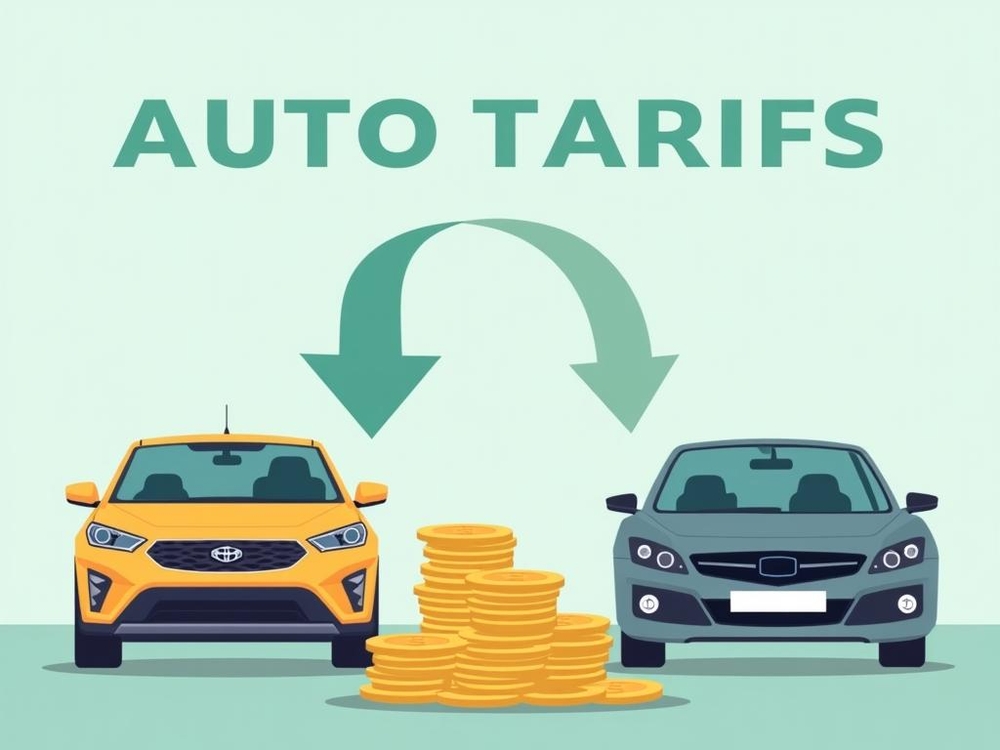Published
- 5 min read
Understanding the Impact of Auto Tariffs on the Economy

U.S. stocks fall; auto tariffs, GDP data hit sentiment
Now, let me be clear about this economic situation we’re facing. U.S. stocks declined Thursday. Investors processed the news that the Trump administration will put big tariffs on automobile imports.
At 09:35 ET (13:35 GMT):
- The Dow fell 210 points, or 0.5%.
- The S&P index dropped 28 points, or 0.5%.
- The Nasdaq slipped 115 points, or 0.6%.
Trump announces auto tariffs, car stocks slide
President Donald Trump announced a 25% tariff on all foreign-made cars and light trucks, effective April 2. This decision mirrors similar protectionist trade policies we’ve seen before. However, it uses higher percentages.
These tariffs are expected to drive up local car costs in the short-term. Manufacturers scramble to change supply chains and move more production to the U.S.
American automakers won’t get off easy. The 25% tariff presents hurdles for U.S. car companies. Many have factories outside the U.S., especially in Mexico where manufacturing costs are lower.
General Motors, Stellantis, and Ford all saw their stock prices go down. U.S.-listed foreign automakers like Toyota, Honda, and Ferrari watched their shares fall as well.
The auto tariff announcement has intensified worries about the broader economic effect of Trump’s tariff agenda. He plans to impose more tariffs on major U.S. trade partners on April 2, a date he calls “liberation day.”
Why are auto tariffs significant now?
Auto tariffs are more than a tax. They signal a shift in trade policy. Historically, the U.S. has used tariffs to protect domestic industries. However, these tariffs, especially at 25%, are much larger than usual. This move fits into a broader trade policy that seeks to reduce reliance on imports and boost local production. It marks a shift towards more protectionist measures compared to previous policies.
Balancing perspectives on tariffs
While many worry about the negative impacts, some stakeholders could benefit from the tariffs. Domestic manufacturers might see more demand as foreign cars become expensive. This could lead to more jobs in local factories. These benefits, however, depend on whether manufacturers can scale up production effectively.
Impact on competitors and related sectors
These tariffs don’t just affect car companies. They also hit related sectors. The steel and aluminum industries might see changes due to increased demand for locally made car parts. Competitors in countries affected by the tariffs may adjust by cutting prices or seeking new markets. They might also change where they build cars to bypass tariffs.
U.S. economic growth slows
Concerns grow that these trade duties will hurt U.S. growth. They might ignite inflation, heavily weighing on U.S. equities during the first quarter of 2025.
Data released earlier Thursday showed U.S. growth slowed in the fourth quarter. It was based on a final revision of government data after two earlier estimates.
Gross Domestic Product rose at a rate of 2.4% during this time, compared to 3.1% in the July-September quarter, according to figures from the Commerce Department’s Bureau of Economic Analysis. Economic experts expected the number to stay the same at 2.3%, so this slight upward revision was surprising.
Comments from FOMC members are being watched closely. Alberto Musalem recently said risks have increased. Inflation might stay above 2% or rise soon. Rising import taxes could trigger more persistent price pressures. This creates a tough environment for monetary policy.
Effects of auto tariffs on car prices
Auto tariffs lead to higher car prices for consumers. When a tariff is added, car manufacturers must pay more to import cars. This extra cost often gets passed down to buyers. New cars become costlier, and some models might become scarce.
Consumers could react in different ways. Some might hold off on buying a new car. Others could shift towards used cars to save money. Over time, if tariffs stay, we might see more people opting for U.S.-made vehicles. However, these shifts depend on how companies and buyers respond to the price changes.
Lululemon to report
Regarding earnings, markets are watching Lululemon Athletica’s quarterly report closely after the closing bell. Investors are especially curious about any comments from company leaders about the future of discretionary spending. Recent data shows consumers are getting careful, partly due to potential economic winds from Trump’s tariffs. This is a shift in consumer behavior seen during previous times of economic uncertainty.
Meanwhile, Winnebago stock climbed by over 7%. The motorhome maker reported better-than-expected fiscal second-quarter revenue and a smaller loss.
Crude prices retreat
Oil prices fell from a one-month high Thursday. Government data confirmed a significant drop in U.S. crude inventories, pointing to healthy demand for fuel in the world’s largest economy.
At 09:35 ET, Brent crude futures fell 0.2% to $72.92 a barrel and U.S. West Texas Intermediate crude dropped 0.1% to $69.60 per barrel.
Both benchmarks rose by about 1% Wednesday after government data showed that inventories fell by 3.3 million barrels last week. This was much more than analysts expected, a 956,000-barrel drop.
Market sentiment has been dampened. President Trump’s auto tariff announcement makes traders consider its potential impact on global economic activity and energy consumption patterns.
Summary
Alright folks, this wraps up our glance at the latest economic news. Stocks are sliding, tariffs are impacting, and concerns about economic growth are looming. Auto tariffs are a big part of this change, affecting everything from car prices to global trade dynamics.
Keep an eye out for future changes in the market. Stay proactive and informed, especially if you’re pondering big purchases. Understanding how tariffs affect daily life is key to navigating these shifts.